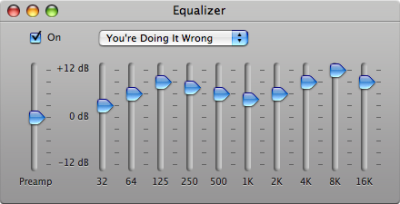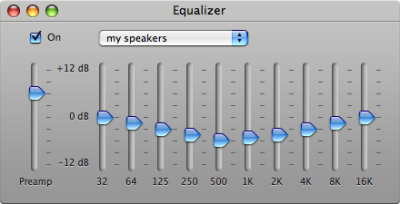
No, it was in the comment thread where audio engineers chimed in and set the record straight. That's why I love these kinds of threads. They stick around forever, and people can add to them years afterward explaining why everything you thought you knew is wrong. In this instance, pushing the levels past the midpoint. Instead, you want to do "subtractive equalization," that is, set the levels you want below the midpoint and use the slider on the left to compensate for gain. This ensures you'll get a minimum of distortion and the dreaded "wuff wuff" sound. The goal is not to make your speakers louder, but fuller. Like this:

Now these are for small speakers, so I wouldn't recommend these levels for high quality ones. In fact, when I listen to these levels on headphones, they sound horrible. But for small desktop speakers, this is just the trick.
Oh, and did Apple ever fix the longstanding balance bug, where if you rapidly changed the system volume, it would incrementally throw off the speaker balance setting? 'Cause it's still there in OS X 10.4.11.


Finally a solution to my iTunes distortion problem! Thanks!
ReplyDelete